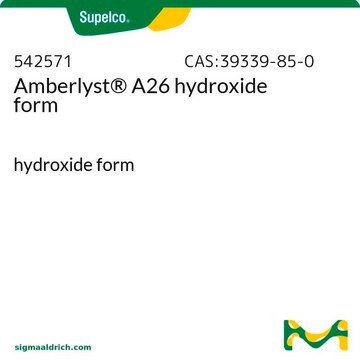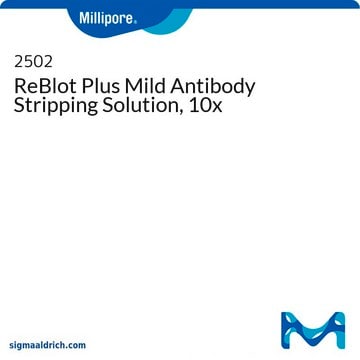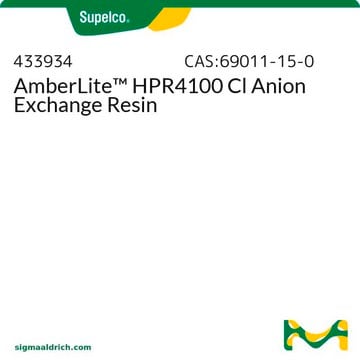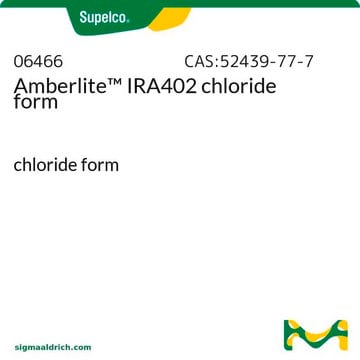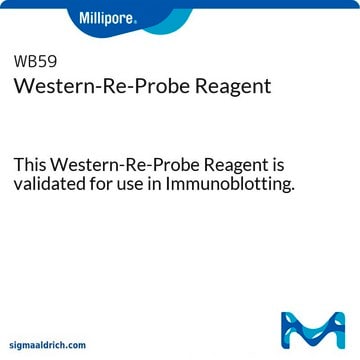06476
Ambersep 900 Ion Exchange Resin
hydroxide form, 16-45 mesh, strongly basic
Anmeldenzur Ansicht organisationsspezifischer und vertraglich vereinbarter Preise
Alle Fotos(1)
About This Item
Empfohlene Produkte
product name
Ambersep® 900 Hydroxid-Form, OH--form, strongly basic
Form
beads
Feuchtigkeit
64%
Methode(n)
LPLC: suitable
Verlust
~75% loss on drying, 110 °C
Matrix
styrene/divinylbenzene
Aktive Matrixgruppe
quaternary ammonium
Partikelgröße
20-50 mesh
Kapazität
0.8 meq/mL by wetted bed volume
Trenntechnik
anion exchange
Verwandte Kategorien
Allgemeine Beschreibung
Stark basisches (Typ I) Anionentauscherharz.
Anwendung
Ambersep 900 hydroxide resin has been used for the selective removal of chlorophyll from natural extracts with a high phytochemical content. It may be used as a catalyst for the synthesis of glycerol carbonate by using glycerol and dimethyl carbonate reactants.
Rechtliche Hinweise
Ambersep is a registered trademark of The Dow Chemical Company or an affiliated company of Dow
Lagerklassenschlüssel
10 - Combustible liquids
WGK
WGK 3
Flammpunkt (°F)
Not applicable
Flammpunkt (°C)
Not applicable
Persönliche Schutzausrüstung
Eyeshields, Gloves
Choose from one of the most recent versions:
Besitzen Sie dieses Produkt bereits?
In der Dokumentenbibliothek finden Sie die Dokumentation zu den Produkten, die Sie kürzlich erworben haben.
A Robust and Scalable Continuous Flow Process for Glycerol Carbonate.
Van Mileghem S, et al.
Chemical Engineering & Technology, 163, 147-153 (2018)
Sebastiaan Bijttebier et al.
Food chemistry, 163, 147-153 (2014-06-11)
Alkaline saponification is often used to remove interfering chlorophylls and lipids during carotenoids analysis. However, saponification also hydrolyses esterified carotenoids and is known to induce artifacts. To avoid carotenoid artifact formation during saponification, Larsen and Christensen (2005) developed a gentler
Unser Team von Wissenschaftlern verfügt über Erfahrung in allen Forschungsbereichen einschließlich Life Science, Materialwissenschaften, chemischer Synthese, Chromatographie, Analytik und vielen mehr..
Setzen Sie sich mit dem technischen Dienst in Verbindung.
